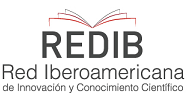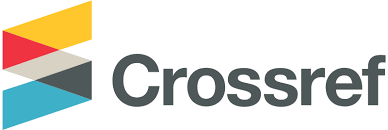Adicción a internet en estudiantes de nivel secundaria
DOI:
https://doi.org/10.46363/jnph.v3i2.4Palabras clave:
Adicción, uso excesivo, estudiantes de secundaria, internet, TAIResumen
La adicción a internet es un problema en nuestra sociedad moderna, de tipo psicológica caracterizada por una mayor actividad de esta manera genera incomodidad poca tolerancia y negación a sus problemas cuando las personas no están en línea. Este estudio tiene como objetivo Determinar el nivel de adicción a internet en estudiantes de nivel secundaria de una institución educativa pública, Cañete- 2023. Para el desarrollo de la presente investigación se ha seguido las dos etapas: Primera etapa: se entregó el consentimiento y asentimiento informado, segunda etapa: se explica y aplica a los alumnos el test de adicción a internet (AIT) que tomo alrededor de 10 minutos. Los resultados de la evaluación de adición al internet, se obtuvo nivel predominante la categoría media con el 47%, seguida de 34% se encuentra en la categoría (Bajo- muy bajo), el 19% se encuentra en la categorial (alto-muy alto).
Citas
Aziz, A. (2021). Internet Addiction among Secondary School Students in Upper Egypt. Journal of High Institute of Public Health, 51(2),67-75.
Bilge, M. (2022). Investigating the Association Between Adolescent Internet Addiction and Parental Attitudes. IJPH. Int J Public Health, 67, 1605065.
Ciacchini, Rebeccaa; Orrù, Graziellaa; Cucurnia, Elisaa; Sabbatini, Silviaa; Scafuto, Francescaa; Lazzarelli, Alessandrob; Miccoli, Marioc; Gemignani, Angeloa; Conversano, Ciroa. (2023). Social Media in Adolescents: A Retrospective Correlational Study on Addiction. ChildrenOpen Access, 10 (2), 278.
Curi Palma, D. (2021). Adicción al internet y agresividad en estudiantes de secundaria de dos instituciones educativas públicas de chorrillos [Universidad Autonoma del Perú].
Evli, M., Şimşek, N., & Işıkgöz, M. (2021). Internet addiction, insomnia, and violence tendency in adolescents. International Journal of Social Psychiatry, 69(2); 351-361.
Fayez, A. M. (2020). Aggressiveness and life satisfaction as predictors for video game addiction among Palestinian adolescents. Journal of Concurrent Disorders, Vol. 3.
Fekih-Romdhane, F.; Jahrami, H.; Away, R.; Trabelsi, K.; Pandi-Perumal, S.; Seeman, M..; Hallit, S.; Cheour, M. (2023). The relationship between technology addictions and schizotypal traits: mediating roles of depression, anxiety, and stress. BMC Psiquiatría, 23(1),67.
Florez Duarte, C. (2022). Adicción al internet en adolescentes de un centro de psicoterapia del distrito de Miraflores Lima, 2020 [Universidad Continental].
Giridharan, M. (2022). Internet addiction on aggression among school going adolescents. Journal of Positive School Psychology , 6(4).
Hernández Sampieri, R., Fernández Collado, C., & Baptista Lucio, P. (2014). Metodología de la investigación (P. Baptista Lucio, Ed.). McGraw-Hill Education.
Internet Addiction Test (IAT). (2017). Stoelting Company. https://stoeltingco.com/Psychological/media/IAT_web_sample.pdf
Jain, & Akhilesh. (2020). Study of internet addiction and its association with depression and insomnia in university students. Wolters
Kluwer, Journal of Family Medicine and Primary Care 9(3), 1700-1706.
Krahé, B. (2020). Aggression in Times of Covid-19: The Social Costs of the Pandemic. Routledge.
Kumar, M., & Mondal, A. (2019). A study on Internet addiction and its relation to psychopathology and self-esteem among college students. National Library of Medicine, 1(Enero - Junio). https://www.ncbi.nlm.nih.gov/pmc/articles/PMC6198588/
Muarifah, A., Mashar, R., & Hashimah, I. (2022). Aggression in Adolescents: The Role of Mother-Child Attachment and Self-Esteem. National Library of Medicine. 12(5), 147.
Ozlem Ozturk, F., & Ayaz Alkaya, S. (2021). Internet addiction and psychosocial problems among adolescents during the COVID-19 pandemic: A cross-sectional study. National Library of Medicine. Arch Psychiatr Nurs, 35(6),595-601
Peruano, E. (2016). Uno de cada 100 menores muestra adicción a internet. https://elperuano.pe/noticia/44566-uno-de-cada-100-menores-muestra-adiccion-a-internet
Rhodes, I. (2022). Internet addiction and academic procrastination. Frontiers in Educational Sciences, 1(1).
SaĞaR, M., & KÖK, E. (2022). Relationship Between Internet Addiction and Sleep Quality in University Students. RESEARCH / ARAŞTIRMA, 3(23).
Stephen, M. (2022). Aggression. StatPearls [Internet]. https://www.ncbi.nlm.nih.gov/books/NBK448073/
Suciyanti Maghfiroh, V., & Muqoddam, F. (2020). The Psychological Dynamics of Youth with Internet Addiction. TAZKIYA(Jurnal of Psychology), 8(1).
Topal, T. (2020). Investigation of high school students' internet addiction levels using various variables: The case of Giresun Province. Educational Research and Reviews, 16. Vol.16(1), 1-8.
Young, K. (2007). Treatment Outcomes with Internet Addicts. Center for Internet Addiction Recovery, 10(5).
Zenebe, Y., & Kunno, K. (2021). Prevalence and associated factors of internet addiction among undergraduate university students in Ethiopia: a community university-based cross-sectional study. BMC Psychology, 1. https://bmcpsychology.biomedcentral.com/articles/10.1186/s40359-020-00508-
Publicado
Número
Sección
Licencia
Derechos de autor 2023 Fiorella Ramos Bautista, José Sandoval Huayre

Esta obra está bajo una licencia internacional Creative Commons Atribución 4.0.







